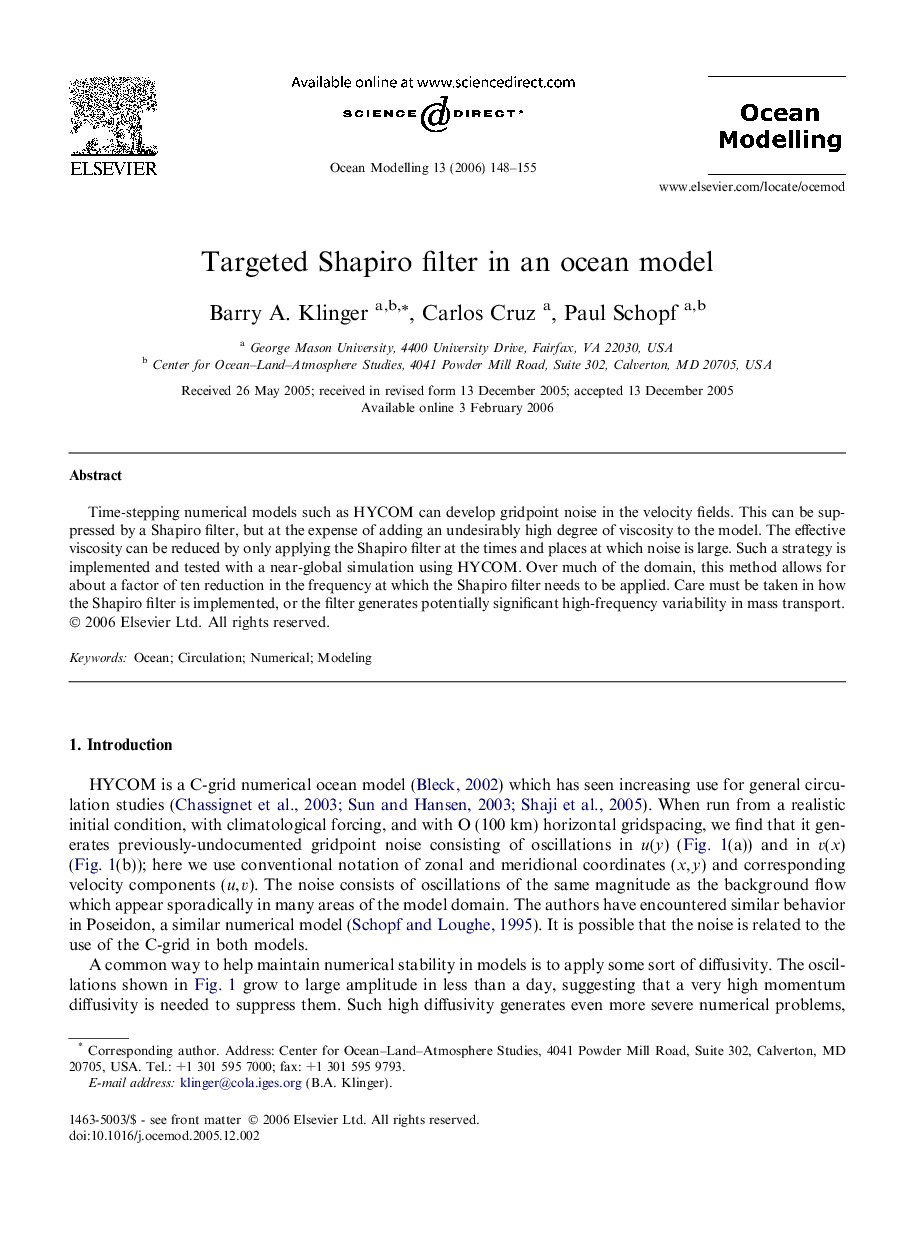| Article ID | Journal | Published Year | Pages | File Type |
|---|---|---|---|---|
| 4552845 | Ocean Modelling | 2006 | 8 Pages |
Abstract
Time-stepping numerical models such as HYCOM can develop gridpoint noise in the velocity fields. This can be suppressed by a Shapiro filter, but at the expense of adding an undesirably high degree of viscosity to the model. The effective viscosity can be reduced by only applying the Shapiro filter at the times and places at which noise is large. Such a strategy is implemented and tested with a near-global simulation using HYCOM. Over much of the domain, this method allows for about a factor of ten reduction in the frequency at which the Shapiro filter needs to be applied. Care must be taken in how the Shapiro filter is implemented, or the filter generates potentially significant high-frequency variability in mass transport.
Keywords
Related Topics
Physical Sciences and Engineering
Earth and Planetary Sciences
Atmospheric Science
Authors
Barry A. Klinger, Carlos Cruz, Paul Schopf,
